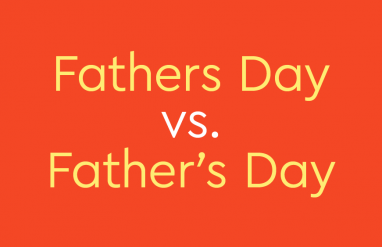The words saw and seen are forms of the irregular verb see. As you can see, unlike most verbs, saw and seen don’t end in -ed or -d, which can make it tricky to determine when each should be used.
In this article, we’ll break down when and how to use saw and seen, explain what makes see an irregular verb, and provide examples of how different forms of see are used in sentences.
⚡ Quick summary
Seen and saw are forms of the irregular verb see. Saw is the past tense form, as in I saw him yesterday. Seen is the past participle form and is used to form the perfect verb tenses, as in She has seen every movie in the series (present perfect tense) and She had seen every movie in the series until this one (past perfect tense). Seen is also used in passive constructions, as in The movie can only be seen in theaters.
When to use seen or saw
The words saw and seen are forms of the irregular verb see. Saw is the past tense form and seen is the past participle form.
Verbs are typically considered to be irregular verbs if their past tense form and/or past participle are not formed by adding -ed or -d to the end of their root form. This is the case with see (as neither the past tense nor the past participle are seed).
Because seen is the past participle, it’s used with the auxiliary verbs have, has, and had to form the perfect verb tenses. The verb phrase has seen is used with a third person singular subject (with the exception of singular they). The phrase have seen is used with any other subject, including first person singular/plural, second person singular/plural, and third person plural.
For example:
- I saw a raccoon last night. (past tense)
- He has seen raccoons several times. (present perfect tense)
- I have seen many wild animals in my life. (present perfect tense)
- I had seen raccoon tracks before last night, but I had never seen an actual raccoon. (past perfect tense)
As with other past participles, seen is the form used when using see in the passive voice. When used this way, seen is accompanied by one of the forms of the helping verb be (is, was, are, etc.). The form of be that you use is determined by the subject and/or a modal verb.
For example:
- A bear was seen at the campsite yesterday.
- The error can be seen here.
Some verbs are even more irregular than see, such as the verb be, whose forms include is and are, was and were, and been and being.
Is it I seen or I saw?
Since saw is the past tense form of see, I saw is considered the standard form when describing past events. The word saw can be used with either a singular or plural subject, as in I saw, she saw, you saw, we saw, they saw, etc.
In standard English, using seen with I requires a form of the helping verb have, as in I have seen (present perfect) or I had seen (past perfect).
Although it is considered nonstandard, the phrase I seen is sometimes used as a past tense form in a variety of English dialects, as in I seen her yesterday.
Examples of see, seen and saw used in a sentence
Now that we’ve learned more about see, seen, and saw, let’s take a look at how we use these different forms in sentences.
- I can see that we are going to need a lot more chairs.
- We saw a whale swim right under the boat.
- The health inspector was shocked by what she had seen at the restaurant.
- The suspect was last seen traveling north in a red SUV.
- You saw what the team can do even without preparation, and next week you will see how effective they can be with a week of prep time.
- The reporter had seen the eyewitness accounts of the people who claim to have seen the events as they happened.
See how much you have learned with our quiz
Feeling good about your past tense forms? If so, you can take our quiz on these forms of the verb see. Take a look, you may surprise yourself with what you’ve learned!














